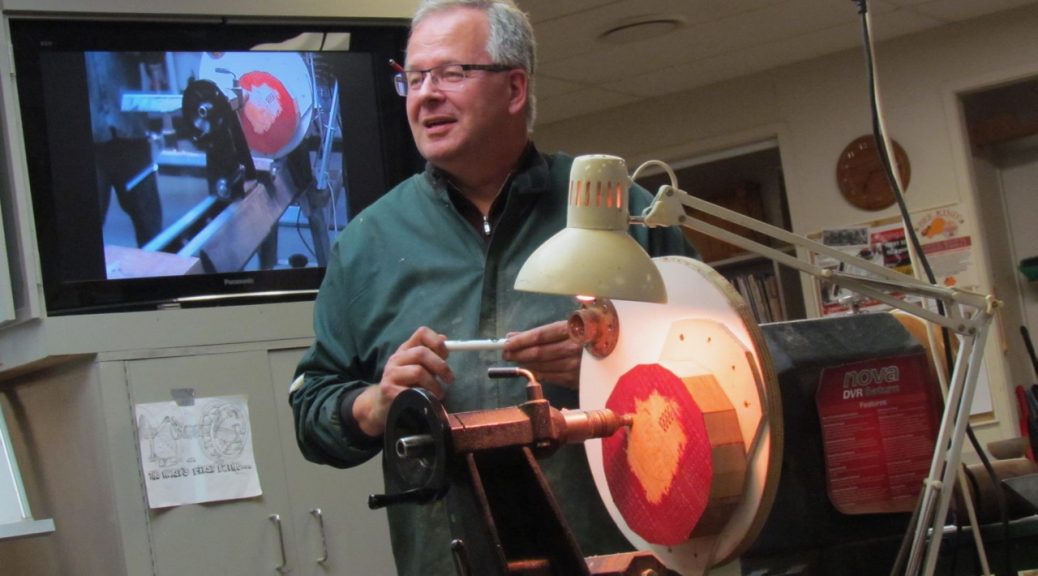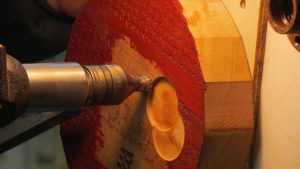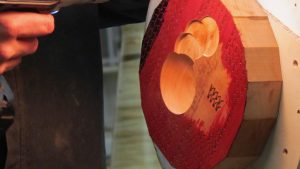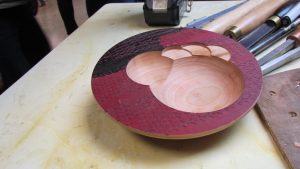Club Meeting: 4 July 2018
Report by: Murray Wilton
Swiss-born American resident Michael Werner gave a master class in a different approach to bowl turning, although the bowl seemed to be more decorative than practical. His home is in the small rural town of Quincy, at the geographical centre of the state of Washington, where he has given up his professional craft to teach in a small progressive school.
Demonstrating sans safety mask or goggles, Michael chose fruit cherry wood as the medium. The piece had been pre-prepared, rough rounded and the top surface textured and coloured with red acrylic paint. The area where the small “dimples” were to be cut was left bare so that he could see his marking out. The round was mounted on a particle board backing plate which he called a “charter plate”. To balance the offset centres he mounted a small faceplate on the charter plate opposite the first offset centre, moving it as required for each new offset centre to maintain the balance.
Using a European beading tool, really a skew chisel used like a scraper, he turned the first small “dimple” with a flat bottom. Lathe speed was about 1000 rpm. A parting tool was used to avoid tearing of the finished hollow and a bowl gouge made a chamfered edge. The first “dimples” were around 25 mm diameter and progressed in an arc around the edge of the bowl to give the effect of stepping-stones leading to a pond. The depth was about 3 mm.
Adjustments were made to move to the next offset. Each time after removing the charter plate Michael sanded the screw holes to ensure a good flat surface in the new position. To ensure perfect levels he uses a straight edge and checks the shadow. The last stepping stone was cut to 6 mm depth and 70 mm diameter.
The final main bowl hollow was 100mm diameter and hollowed to a depth which would leave sufficient material to complete the base after the bowl is turned over. To ensure there was no tragic event Michael constantly checked the depth and wall thickness. Minimal sanding was needed owing to fine tool work.
To complete the outside and bottom of the bowl the piece was removed from the charter plated and mounted in a chuck (a spigot having been cut earlier). Michael finished the work by mounting the bowl held by the tailstock against a round of particle board and with a paper gasket to avoid slipping. Alternatively hot melt glue could be used and cleaned off later. The rounded outer edge was finished using a skew chisel as a scraper/planer.



